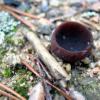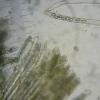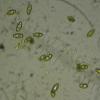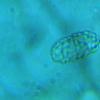
15-12-2025 15:48
 Danny Newman
Danny Newman
Melanospora cf. lagenaria on old, rotting, fallen

15-12-2025 15:54
 Johan Boonefaes
Johan Boonefaes
Unknown anamorph found on the ground in coastal sa

15-12-2025 21:11
 Hardware Tony
Hardware Tony
Small clavate hairs, negative croziers and IKI bb

15-12-2025 07:09
 Danny Newman
Danny Newman
indet. Rutstroemiaceae sp. on unk. fallen leavesMc

15-12-2025 07:05
 Danny Newman
Danny Newman
Pseudosclerococcum golindoi (det: Zotto)near Cosb

15-12-2025 11:49
 Danny Newman
Danny Newman
ITS sequences from the following two collections B

15-12-2025 12:34
 Danny Newman
Danny Newman
indet. Rhytismataceae on oak leafnear Purchase Roa

09-12-2025 12:06
 Andgelo Mombert
Andgelo Mombert
Bonjour,Je recherche l'article concernant Hypobryo
I was picking mushrooms and when returning noticed these on the way.
I did not see them on the way to woods, so they must have grown while I was there ;)
These did not reach 2 cm width.
The spores are about 14-20x 8-10- and with some kind of ornamentation.
The asci are about 250-300x 11-12 and paraphyses (width about 6) are not longer than asci.
Once again Nordic Macromycetes 1 did not help me to get a determination, which I could be satisfied.
Marja
in my opinión it is a species in the P. badia group, due to the dark tones and brownish spores with tendency to be biguttulate. The asci should be unrestrictedly amyloid in Melzer.
It would be helpful to have more details about the spore ornamentation (reticulate, warty, etc.) and to check if the ascoma bleeds bluish juice when cut with a razor blade in the hymenium.
Cheers,
Ibai.
?
Peziza badia as I know is bigger, often in groups and grows much ealier, in summer. Now it is autumn here and this is much smaller and grows separately.
P. badia is a group species?
When cut, practicly no juice was bleeding.
I'm a bit busy now, but will try to get a better view to the ornamentation later.
Marja
Ps: there were 1-3 guttules in the spores and sometimes some smaller, too

Hi again,
I meant that your Peziza belongs to a group of species in the neighbourhood of Peziza badia (P. depressa, P. badiofusca, P. badioconfusa, P. saniosa, etc..) sharing a dark brown colour, paraphyses with dark content, predominantly biguttulate spores of high ornamentation, a potential ectomycorrhizal habit and non-restricted amyloid reaction of the asci in Melzer´s, as discussed by Hansen et al. (Mol. Phyl. Evol. 36:1-23, as P. depressa-Ruhlandiella clade).
This was just a small clue... I guess we need to see the spore ornamentation to be certain about the species.
Cheers,
Ibai.
?




